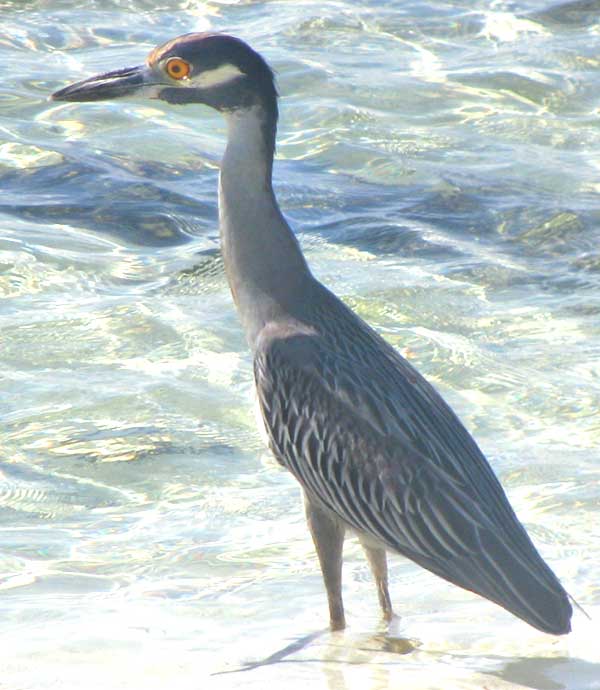Excerpts from Jim Conrad's
Naturalist Newsletter

from the August 7, 2011 Newsletter issued from Mayan Beach Garden Inn 20 kms north of Mahahual; Caribbean coastal beach and mangroves, ~N18.89°, ~W87.64°, Quintana Roo state, MÉXICO
NIGHT-HERON
In the southeastern US I'm accustomed to seeing night-herons in wooded freshwater swamps, so when a chunky, medium-size heron showed up in mid-day sun at the water's edge on the sandy beach, I wasn't thinking "night-heron." The thick-necked silhouette suggested a Bare-throated Tiger-heron, fairly common here in the mangroves, but up closer it bore different markings. Happily, the bird allowed me to get within twenty feet, so you can see what he turned out to be at the top of this page.
He is indeed a Yellow-crowned Night-heron, NYCTICORAX VIOLACEUS. In A Guide to The Birds of Mexico and Northern Central America, Howell says that in this part of the world they occur in mangroves and coastal areas, including freshwater marshes and open beaches, so the species is more adaptable than I'd thought.
Is this bird migrating? In the Yucatan, Yellow-crowned Night-herons are nesting permanent residents. The one in the picture may well be wandering a bit, maybe a young one out exploring prior to settling down. In fact, Howell says that adult Yellow-crowned Night-herons have amber or scarlet eyes, while juvenile eyes are orange-yellow to amber. This one's eyes look more orange-yellow than amber, so that's a vote for it being a juvenile.